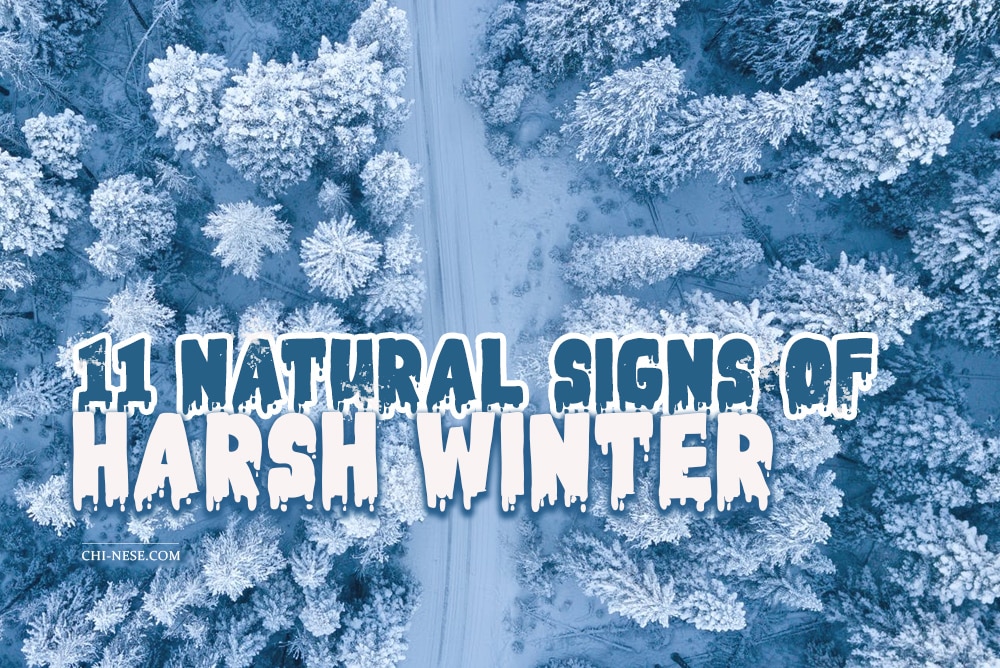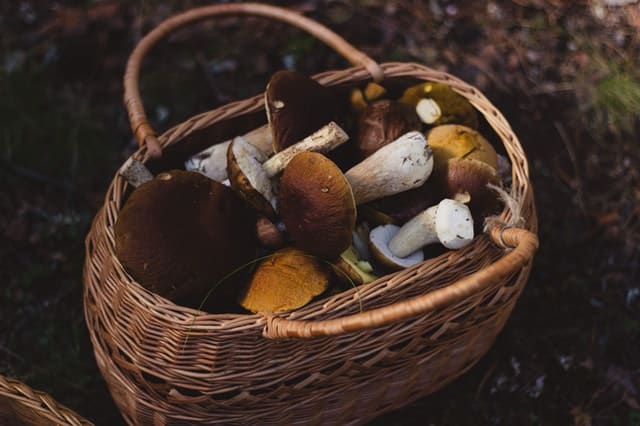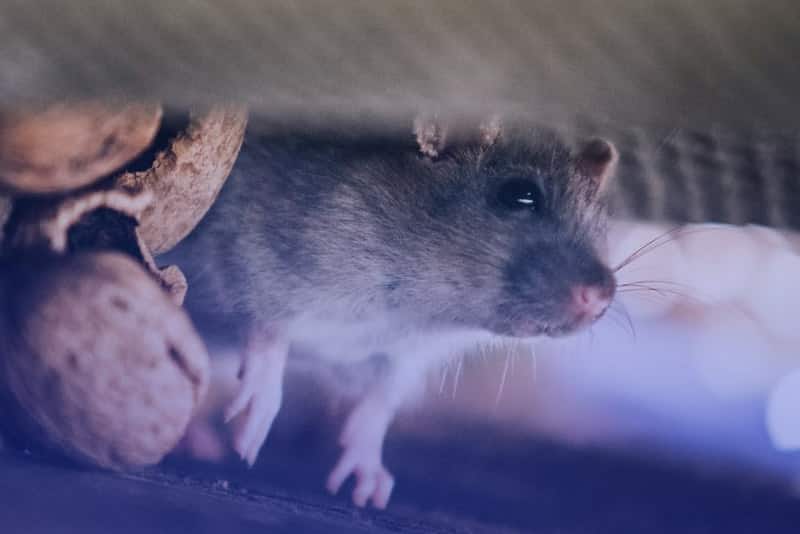Wondering what the winter of 2022/2023 will be like? Many people believe that certain natural events indicate whether the winter will be short and mild or harsh and long. The behavior of animals and plants has been observed in the past, and it has been found that some of these natural events have indeed predicted what the coming winter will be like.

Although weather forecasts can be monitored with the latest technology, no meteorologist can tell you what winter to expect many months prior. That is why it is suggested to watch the inconspicuous signals of nature that speak to us.
This article will look at thirteen indicators from the realm of plants and animals and signs of bad winter coming.
#1 Mushroom harvest

Did you notice an unusually large harvest of mushrooms in August, September, or early October? According to old superstitions, this foreshadows a very harsh and long winter with lots of snow.
It is also believed, especially in Central and Eastern Europe, that a mushroom harvest foretells war.
If you’re not a fan of mushroom picking, a quick Google search will help you find out what this year’s mushroom season was like. In my experience, the year 2022 was particularly generous in terms of mushroom growth. This year, the mushrooms were bigger and ‘meatier.’ However, there were so many of them that people stopped collecting them. Either they wouldn’t fit in their freezer, or they wouldn’t have time to dry them.
#2 Falling leaves

Another way to estimate whether the winter will be harsh is to look at the tree’s leaves. The later the leaves fall from the tree (i.e., the longer they stay on the tree), the harsher the winter. Nobody really knows why the tree tries to keep its leaves as long as possible, but it is one of the best-known indicators that our ancestors have followed.
#3 Increased appetite of cats and rabbits

If cats or rabbits overeat (i.e., they eat much more than usual), especially during October and November, the upcoming winter will be hard and long. It is believed that animals eat more to have a larger fat supply. However, the unanswered question remains why only cats and rabbits are taken into account when it comes to predicting winter and how these animals know (or feel) what type of winter is coming.
See also: Famous superstitions about black cats
#4 Onion peel

This superstition is very old and is known in many European countries, including England, where it is believed to originate. It is believed that the more peel the onion, the harsher the winter will be. Like animals that protect themselves against winter with more fat and fur, onions are protected by more layers of the peel.
Some legends even claim that the number of layers of skin on the onion can be used to estimate the length of the cold months. If the onion has, for example, three layers of peel, the harsh winter or cold temperatures could last three months. I tried this in October 2022, and five out of six onions had five layers!
#5 Anthill

Do you also find insects and ants, in particular, interesting? Then pay attention to the anthills during the summer. The higher the anthill, the harsher the winter. The reason for this superstition is unknown, but moles, who start digging high molehills before the harsh winter, do something similar. Even in this case, the higher the molehill, the harsher the winter.
I spent a lot of time in the woods with a metal detector in 2022, and I had the opportunity to spot this. Most of the anthills were high; I would say higher than usual.
#6 August storms and fogs

This superstition is rather well-known in countries where storms do not occur very often. It is believed that if the storm occurs at least five times during August, the winter will be very harsh. In other countries, it is believed that the fog in August predicts a harsh and long winter. In a warm summer month, such as August, it is relatively easy to notice the fog because it is something very unusual, so you certainly won’t miss this sign!
#7 Spiderwebs

If a spider weaves unusually large spiderwebs or even two spiderwebs on top of each other in your house, you can expect a harsh winter. In folklore, this is one of the most famous things that predicts a harsh winter.
Spiders are cold-blooded, so they are at the mercy of the elements and will seek shelter however they can. So when they make large and solid spiderwebs, it’s not because they have nothing to do and are bored. Instead, it’s because they feel a hard and long winter in the air.
#8 Abundance of acorns

Have you seen unusually many acorns on a walk in nature? This predicts a long and harsh winter. And so it is with beech fruits. A large number of acorns rather predicts how harsh the winter will be, while the beech fruits tend to predict how long the winter will last.
#9 Snowy owl arriving earlier than usual

The snowy owl is difficult to see in winter because it blends in with the snow due to its color. However, the early arrival of this beautiful bird means only one thing: get ready for a harsh winter.
For most of us, spotting a snowy owl is as likely as spotting a shooting star. It’s not impossible, but it’s not common either. Therefore, check the internet and look for information about whether it has already arrived.
#10 Ducks and geese

While the snowy owl brings the news of the harsh winter with its early arrival, the geese and ducks bring this message with their early departure. When geese and ducks fly away earlier than they normally do, it is because they sense winter approaching.
#11 Aggressive mice

Even this small (and not very popular) creature can indicate the arrival of a harsh winter! Mice have lived with us for centuries, and it’s not unusual to spot one here and there throughout the year. However, if the mice are more aggressive than usual, such as gnawing their way into your car, chewing through the cables in the wall to get in, or digging out the insoles of your shoes to hide, it means one thing – a long and hard winter is around the corner.
Mice know that time is not on their side and that a harsh winter would be fatal for them, so they prepare ahead of time.
#12 Abundance of rosehips

A large crop of rosehips is another indicator of a hard winter. So if you spot a bush that is covered in red rosehips, get ready for a long winter. Also, if you want to stay healthy through the winter, I recommend collecting all the rosehips, drying them, and making a delicious rosehip tea that is rich in vitamin C and other important substances.
#13 Rings around the Moon

Have you ever looked up at the moon in the night sky and seen a round ring around it? According to several superstitions, rings (sometimes also known as halos) indicate a harsh winter.
Nature speaks to us
Mother Nature often speaks to us and gives us information or warnings. While some signs are subtle and insignificant or obvious, some should not be overlooked. As I currently live in Central Europe, where people spend more time in the forest than in other countries, I can confirm that in 2022, there was an unusual amount of mushroom growth and anthills were higher than usual. And as the owner of five cats, I can also confirm that they have started eating more and putting on fat.
This year has been a strange one, with many signs that the coming winter will be harsh. Nature is speaking. Are you listening?







